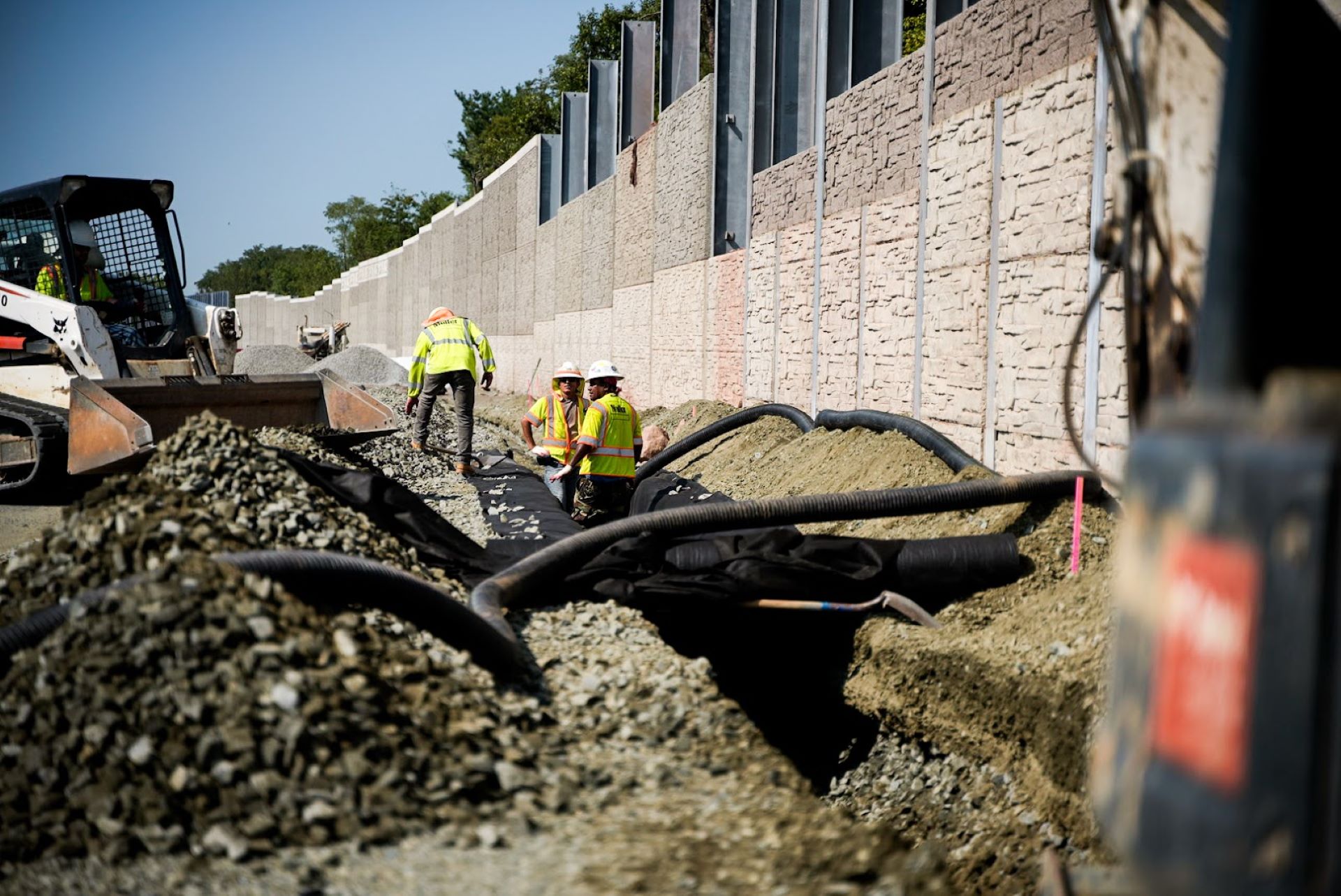When you think of large construction projects, your mind likely imagines the resulting physical structures. What probably doesn’t come to mind is a critical aspect of most projects, utilities. Whether residential, commercial, industrial, or larger-scale infrastructure projects, almost every construction project will have to consider the installation of utilities in one way or another.
Now it’s not uncommon to overlook this critical component of construction projects. With most utilities buried underground, our minds are shielded from these elements just like the utilities themselves. What we don’t see includes the likes of sewers, water supply pipes, storm drains, utility pipes, and more. These fundamental elements are known as wet utilities in the construction industry.
At Muller, Inc., we routinely install and maintain water, storm, and sanitary sewer infrastructure. Our trusted crews have experience working with developers, heavy highways, municipalities, and utility companies to install and maintain both wet and dry underground infrastructure throughout Virginia, Maryland, and Washington, D.C.
This blog will take a closer look at five wet utility installations that are typical of large-scale construction and infrastructure projects in the greater D.C. metro region.
1. Sewer Mainline
Current sewer mainlines are usually made out of PVC, colored green in order to make sure it does not get confused with a water pipe. Before PVC became the material of choice, mainlines were also made of clay, cast iron, and fiber. Sewer lines are normally the very first utility that is connected as they are traditionally installed the deepest in order to make certain that waste is not able to leak into other lines.
Sewer systems primarily rely on gravity to assist with the movement of sewage from homes to off-site treatment facilities, though on occasion a pump line may be put into position if the flow line is overly flat.
2. Storm Drains
A storm drain directs away all forms of excess water from a site and sees it discharged into canals, lakes, oceans, reservoirs, rivers or seas. It may also be discharged into large basins or conveyed to treatment facilities. Reinforced concrete pipe is the most commonly used material here, although storm drains are often composed of high-density polyurethane, corrugated metal or corrugated plastic.
Stormwater first enters the storm drain system via the catch basins that are situated on either side of a street and then exits through concrete outlet structures.
3. Water Mainline
As is also the case with the sewer line, PVC is relied upon for water utilities (though ductile iron is also an option). Potable water utilities are usually the shallowest utility line to ensure that any sewer or storm drain leaks do not get into drinking water.
Water installation is also composed of backflow preventers, blow-off assemblies, and fire hydrants.
4. Sewer Laterals and Water Services
The main water and sewer pipe that runs beneath streets is called the “mainline,” with the individual lines breaking away from the sewer mainline to give service to houses being known as “sewer laterals,” with the laterals for water being known simply as “water services.”
The wet utility installation of these laterals/services will extend to a particular point beyond the gutter and curb prior to the plumber of the individual home or commercial property later coming in and extending it to fully reach the house.
Laterals and services are usually left above ground by the wet utilities installation until the plumber is ready to perform that connection and meter boxes can be set into the ground.
Muller, Inc. is equipped with all of the latest equipment and technology related to the installation of wet utilities. Our experienced crews have worked with land developers, municipalities, utility providers, and heavy highway contractors in the installation and maintenance of both dry and wet underground infrastructure.
5. Reclaimed Water
Designed to help conserve potable water for the highest quality use, water reclamation and reuse has grown considerably in recent years. Reclaim water is routinely used for several commercial applications including irrigation, car washes, the chilling of HVAC systems, and the cooling of data centers. These “purple pipes” are a completely separate utility from the system used to deliver potable water.
Installation of Wet Utilities
Muller, Inc. will assist with the installation of infrastructure that will be able to meet all municipal, county, state, and federal code requirements throughout all of Maryland, Virginia, and Washington, D.C. Muller, Inc has worked with federal, local public, private civilian and state entities in regards to the installation of many different types of wet utilities.
Contact Muller, Inc. today via our website or call us at 703-560-4040 to find out more.

